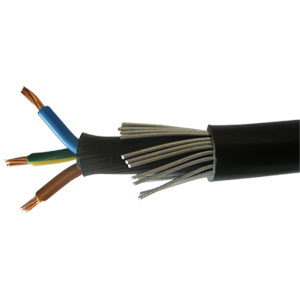Indeed, that would be a bit daft, even though probably 'not a problem' in reality!Well yes - surely nobody would consider splitting LV between the 2 cables?
Well, in context, again daft - if one has three insulated conductors to choose from, and only needs two, why use a bare one?! However, more generally, as for the question as to whether a bare (but sheathed) conductor is acceptable (regs-wise) as a live conductor for ELV, I'd have to read the regs to see what they say. In terms of 'electrical common sense', it would clearly be fine.On a wider, digression sort of thing, if the application required two ELV pairs, then given that 411.3.1.1 has been satisfied by the cpc in the LV cable, what would the panel think about using the bare core in the other cable for ELV?
Kind Regards, John


